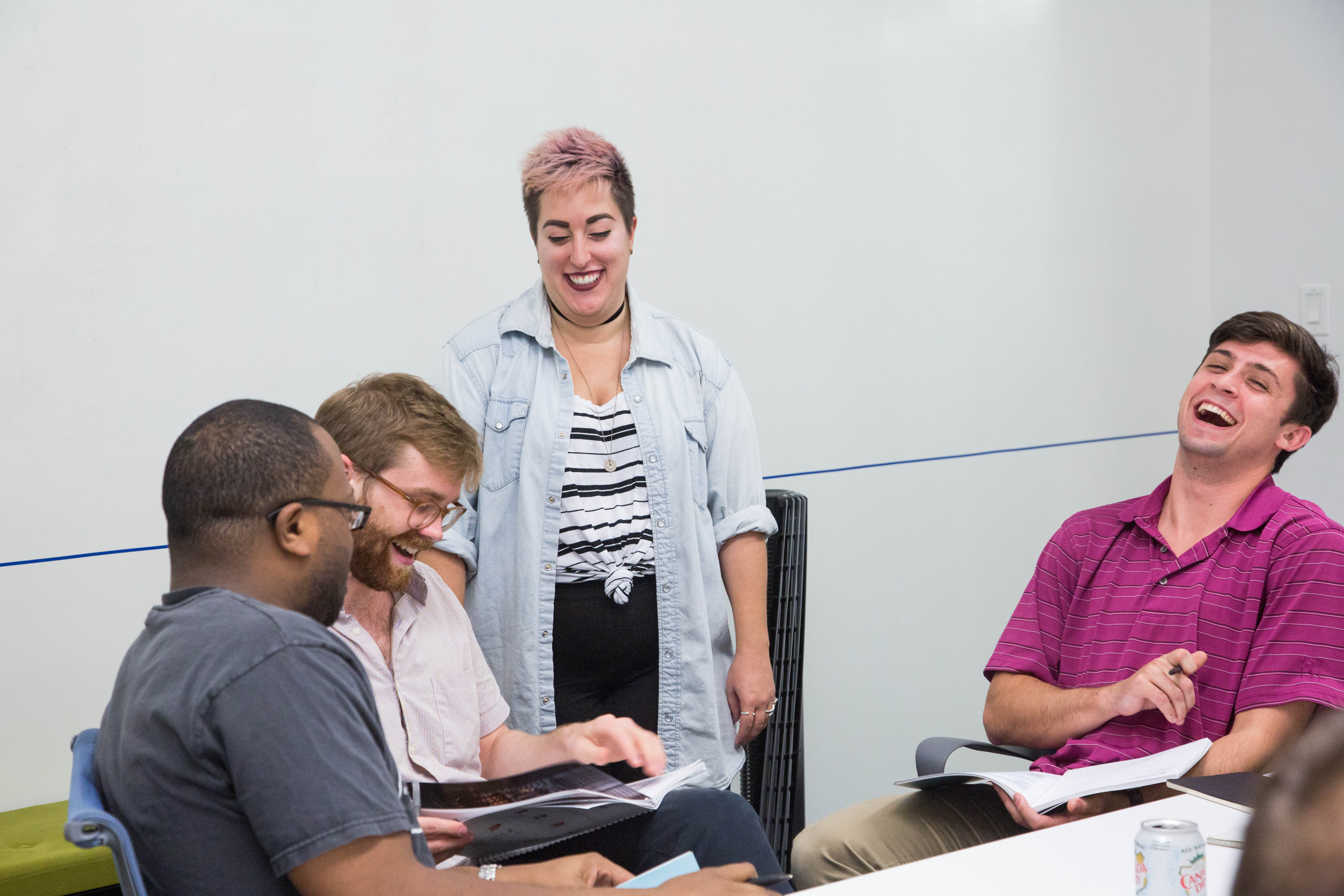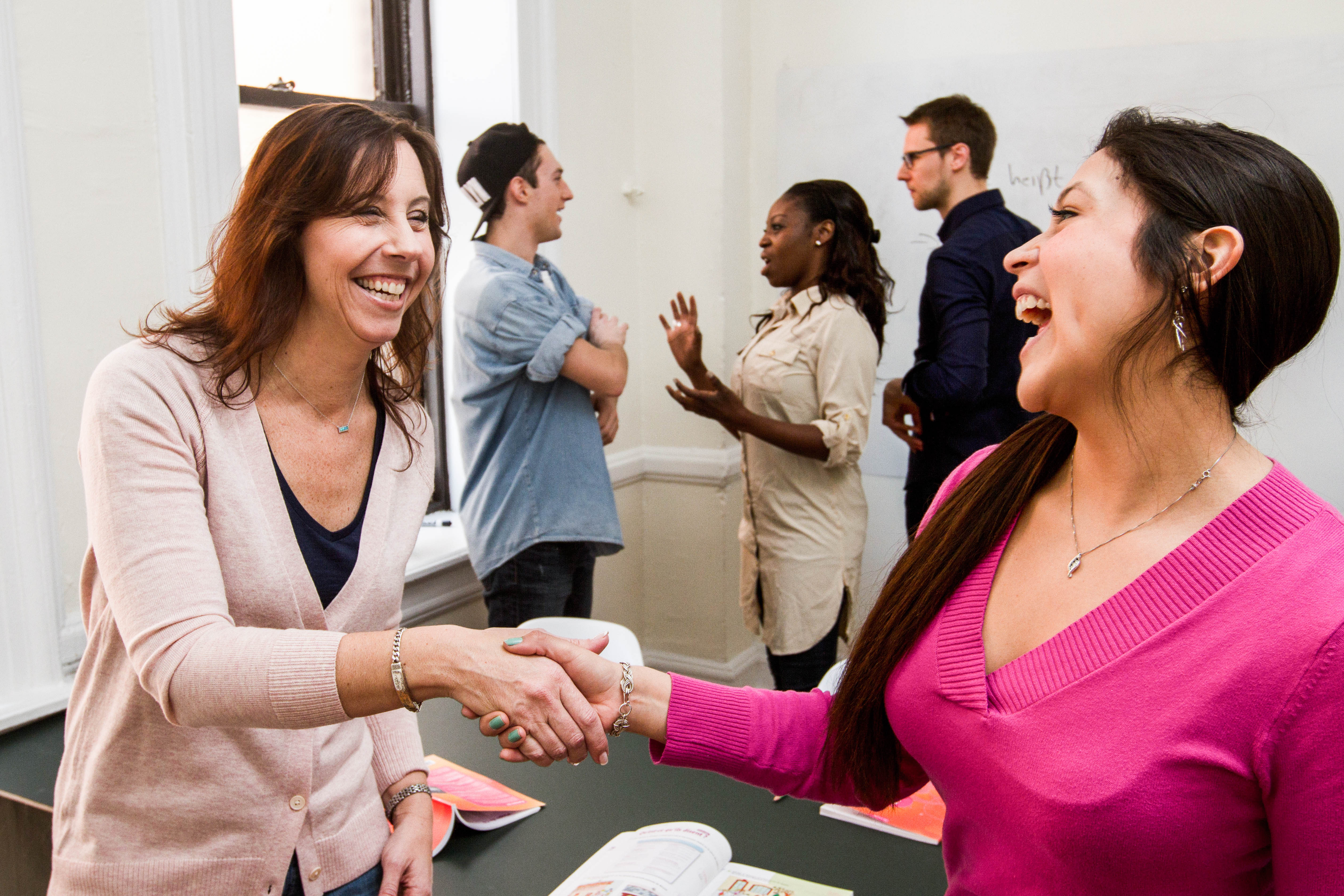In planning your communicative language lesson, it's important to start your class with an exciting, engaging activity such as classroom BINGO. It is always a good idea to get students talking early in the class, rather than starting with immediate instruction or a grammar explanation.
At the same time, you’ll want to begin with an activity that incorporates the vocabulary and grammar structures that your students have been studying to provide an active review of previous lessons.A favorite warm-up activity for Fluent City teachers is a round of classroom BINGO—which can be easily customized for class content and language level. To start, each student receives a 5×5 BINGO card with different phrases in each square.
For example, if you’ve been studying family vocabulary, the phrases might be “has two siblings” or “is an aunt.” If the class has been reviewing hobbies, you could include phrases such as, “plays videogames” or “runs in the park.” You can even customize the game to specific verb tenses, such as what everyone did last weekend (i.e. “went to a baseball game”) or plans for the upcoming holiday (i.e. “will travel out of state”).

To play the game, students stand up and have a “class mixer” where they have to ask different classmates if they match the phrases on the card. Particularly with beginners, it’s a good idea to review this process with students before they start the game so that they recognize how to form questions from the vocabulary provided on their BINGO cards.
Depending on the size of the class, it could take a few minutes for students to fill their five squares, at which point they should shout, “BINGO!” Fluent City teachers usually allow a few students to get BINGO before ending the game, as it makes for more interesting follow-up.
For example, if the phrase is “has two siblings,” a student would ask his or her classmate, “Do you have two siblings?” If the classmate answers yes, the student can write the classmate’s name in that particular BINGO square. The goal is to fill five consecutive squares (vertical, horizontal, or diagonal) with different classmates’ names, so as to encourage students to talk with multiple people throughout the course of the game.
Depending on the size of the class, it could take a few minutes for students to fill their five squares, at which point they should shout, “BINGO!” Fluent City teachers usually allow a few students to get BINGO before ending the game, as it makes for more interesting follow-up. Once students are seated again, you can ask each winner to read their five BINGO squares and the names of the corresponding students. This is a great way to engage your students in conversation while incorporating the same language structures from the game. For example, if Will reads from his BINGO card that Jessica went to a baseball game last weekend, you can then ask Jessica who won or which team she was supporting.

If you’d like to try this activity in your classroom, there are many custom BINGO card generators available online. Fluent City teachers have had great success with this one: Bingo Card Generator, which allows you to customize the card title and size. It also randomizes the squares on each board so that each student has a slightly different BINGO card.
Have you incorporated BINGO into your language lessons? Do you have other suggestions for communicative warm-up activities? Let us know in the comments below!
Think you have what it takes to be a Fluent City language teacher? Apply today at fluentcity.com/careers.


 Spanish
Spanish
 French
French
 Italian
Italian
 Arabic
Arabic
 Portuguese
Portuguese
 German
German
 Chinese
Chinese
 Japanese
Japanese
 Russian
Russian